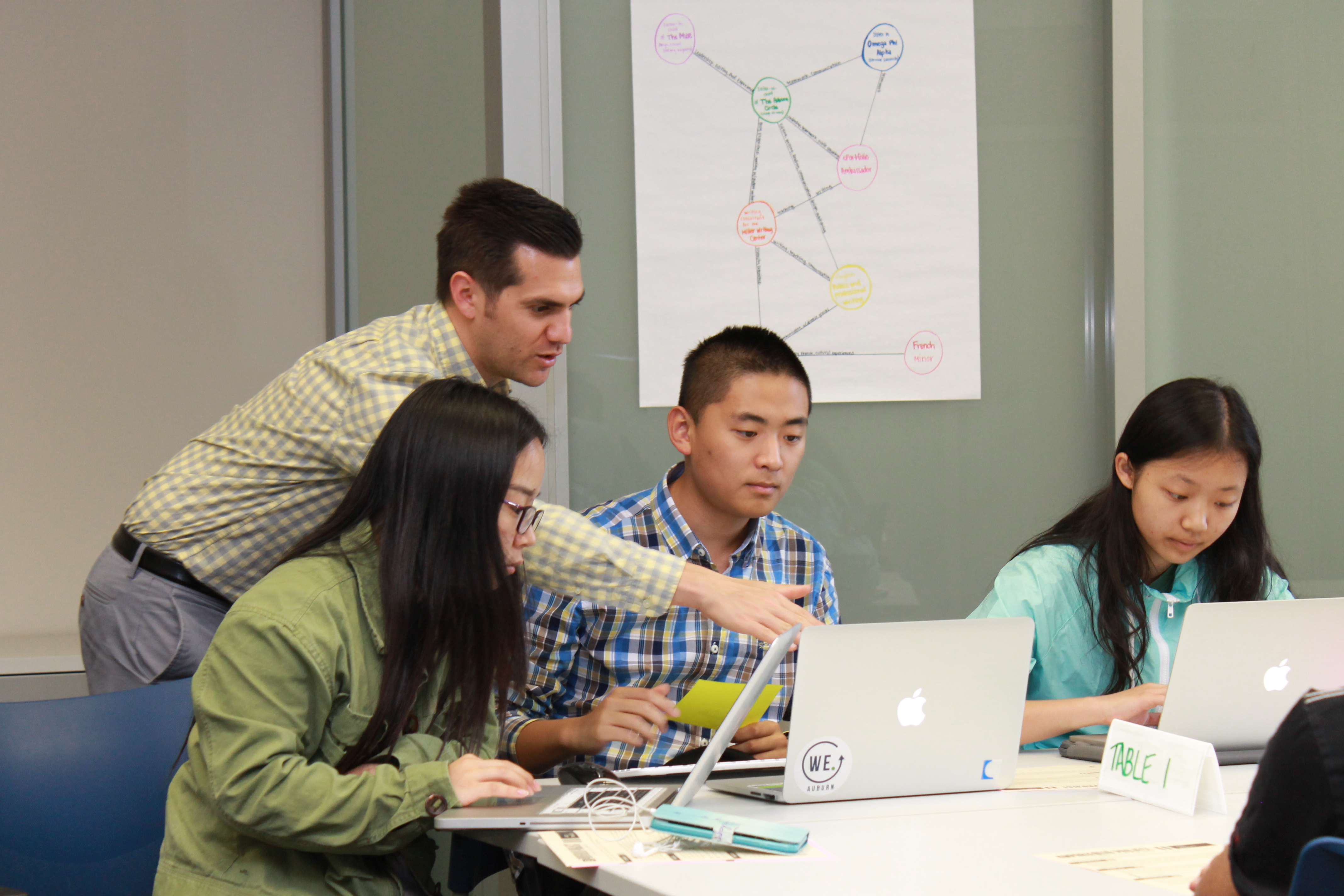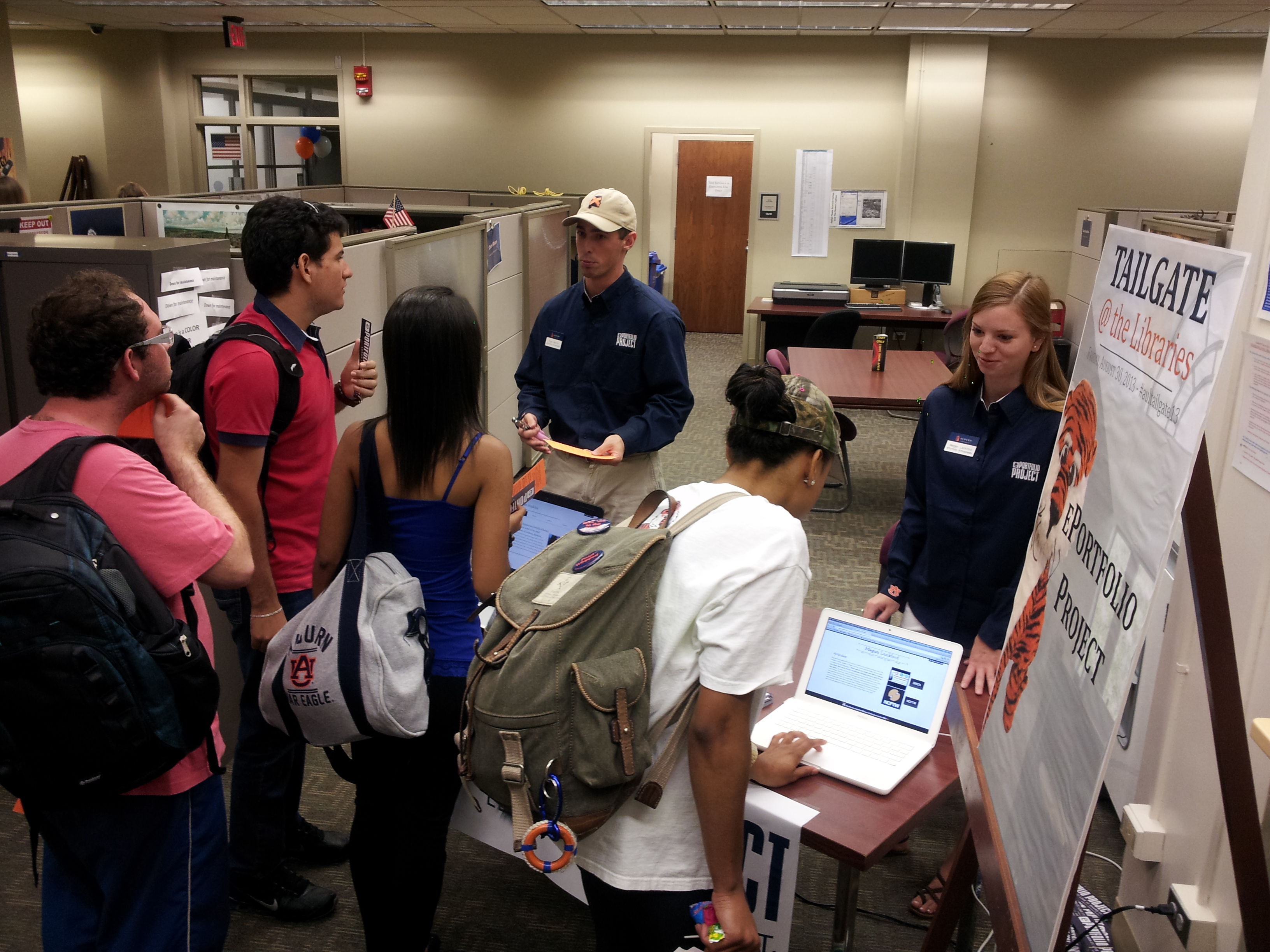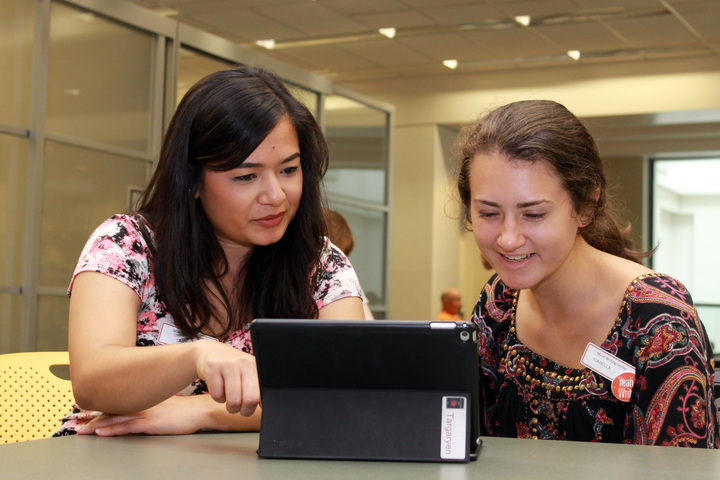Ideally, students will encounter ePortfolio pedagogy in their academic coursework and co-curricular programs. However, some students who want to create an ePortfolio are not enrolled in programs that have joined the ePortfolio Project Faculty Cohort. In addition to working with the Faculty Cohort, the ePortfolio Project directly supports student learning by offering a range of programs and resources for students, including workshops, leadership positions, and campus partnerships.

As students learn about the ePortfolio Project, many of them request support in addition to our online resources. We decided to plan and implement a workshop series to guide students through the process of creating an ePortfolio. Students register for the entire series, which includes six workshops total. Each workshop focuses on a different topic, such as audience, artifacts, reflective writing, design principles, technology, and ethical literacy. We also include a work day and a peer-review day. We made the decision to host a workshop series as opposed to individual workshops on the same topic; this allows us to offer extensive instruction to participants who are from non-Cohort programs. Since ePortfolios integrate scholarship and best practices from many different fields, we use scaffolding to help break down the process. Examples of scaffolding strategies include providing examples, incorporating prompts, and facilitating peer feedback (Barkley 2010).

From the beginning, we made a conscious effort to include student voices in the planning and implementation of the ePortfolio Project. Since ambassador programs are common on our campus, we used this existing model to create the ePortfolio Project Ambassador Program. Ambassadors are undergraduate and graduate students who support the initiative by delivering presentations and attending events on behalf of the ePortfolio Project. Students are not required to have an ePortfolio when they apply to the program. We teach them to create one during trainings and monthly meetings. This allows us to recruit students from a wide range of disciplines, not just students from technology or design programs.
During training, we teach ambassadors how to effectively communicate our structures, programs, and resources to students and faculty. Ambassadors are invited to participate in several other professional development opportunities, such as presenting at conferences and serving on committees. We structured the program to give students control over their time and tasks, in part because autonomy and purpose are key components of student motivation and engagement (Bowman 2010, 2011). We truly value the suggestions and feedback from the ambassadors. In fact, the ambassadors suggested that we create the student workshop series! In addition to learning how to create an ePortfolio, ambassadors also have an opportunity to develop their leadership and public speaking skills.

To offer more support to students, we have developed campus partnerships with the Miller Writing Center, Career Center, and Media and Digital Resource Laboratory. Each support unit brings its own expertise to help students as they create ePortfolios. The Miller Writing Center provides feedback and guides students as they brainstorm, write, and revise content for their ePortfolios. The Career Center encourages students to think about their audiences and about other professional marketing materials, such as resumes and cover letters. Technical and design support are available at the Media and Digital Resource Laboratory. These partnerships allow students to receive individualized support from staff members who are knowledgeable in their respective fields. Working with these groups has allowed us to share resources and integrate ePortfolios into the campus culture.